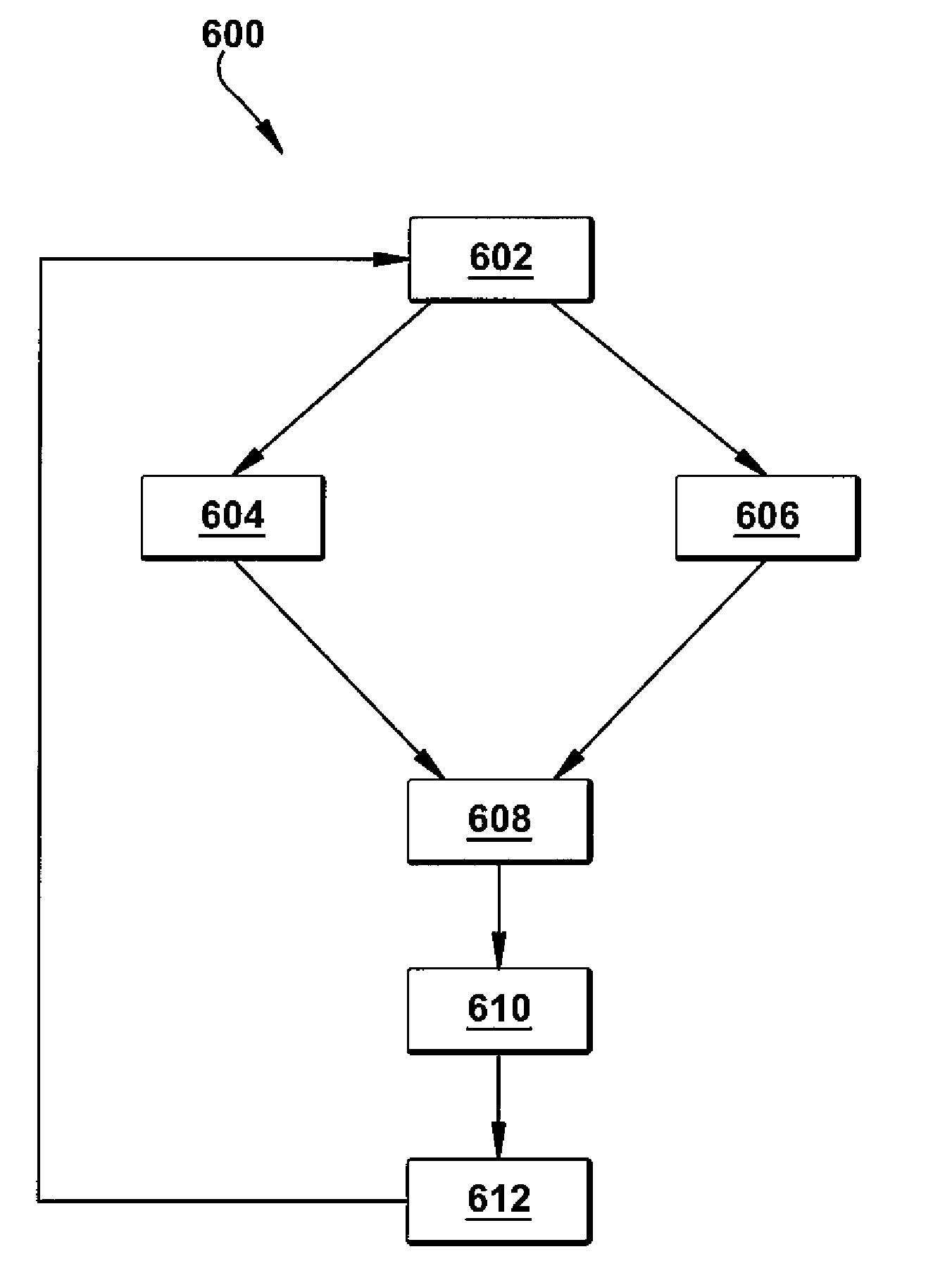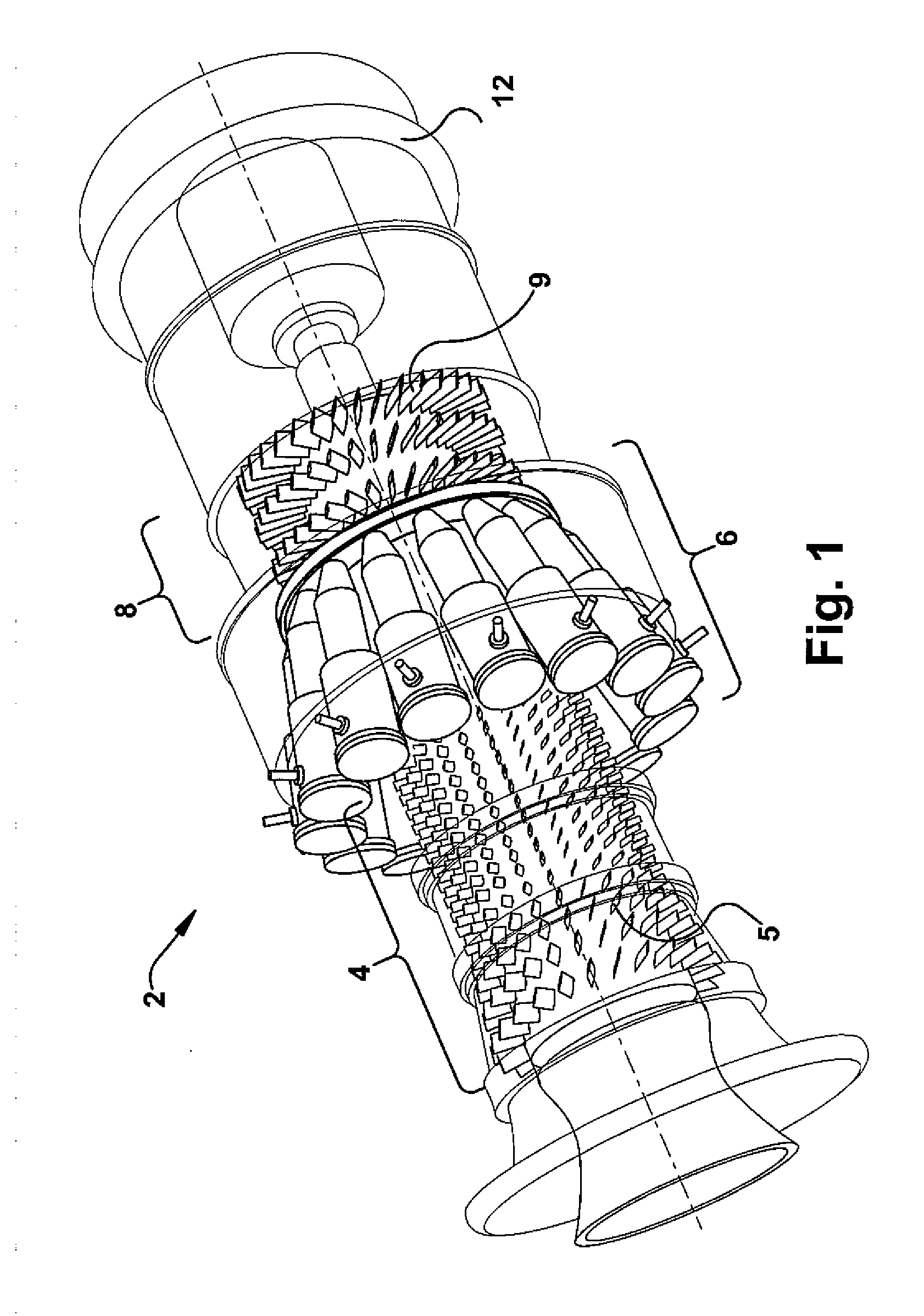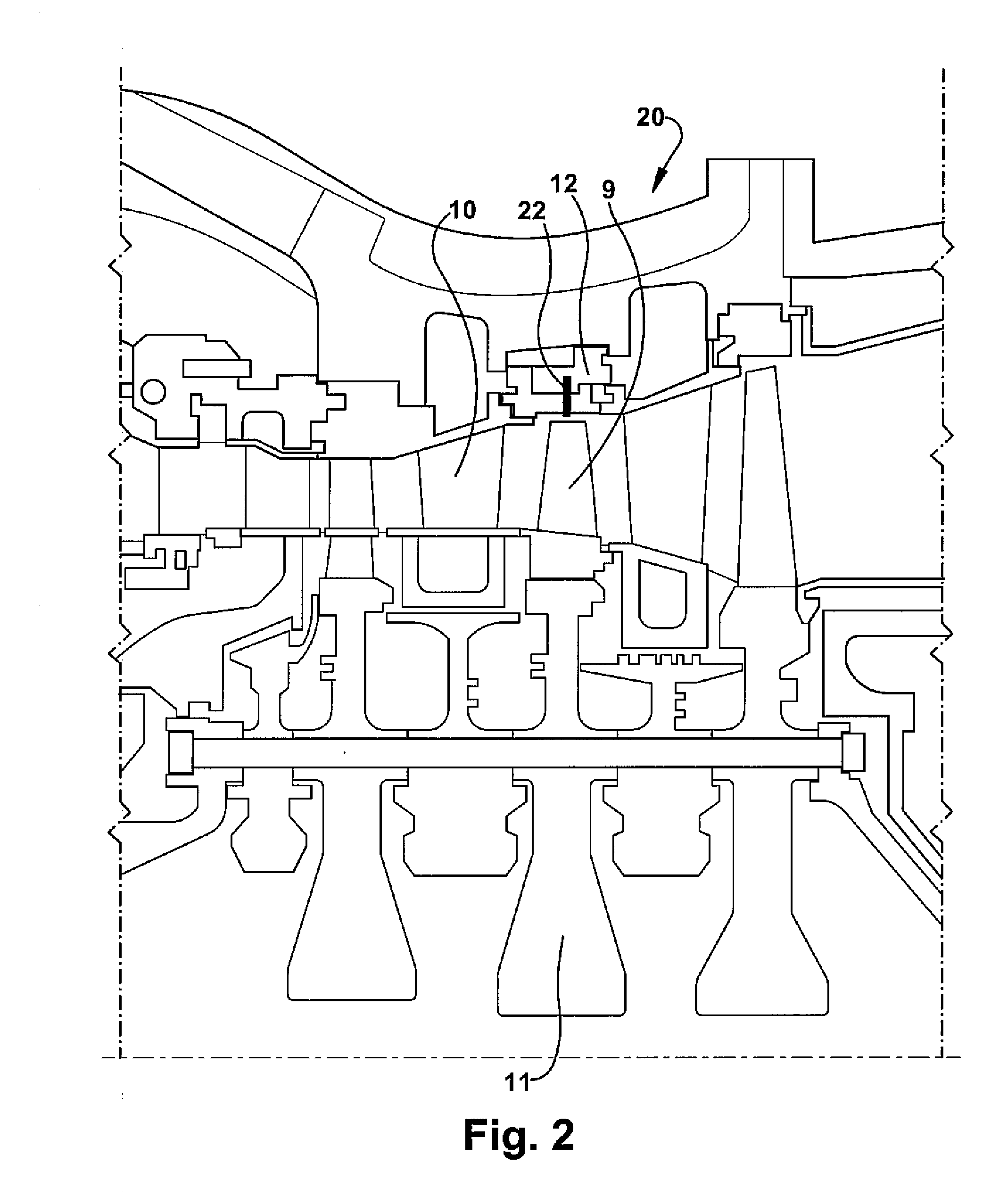Method and systems for operating turbine engines
a technology of turbine blades and systems, applied in the direction of force/torque/work measurement apparatus, process and machine control, instruments, etc., can solve the problems of turbine blade operation at or close to the design limit, severe thermal stress on the turbine blade, and increased mechanical stress on the blade during operation
- Summary
- Abstract
- Description
- Claims
- Application Information
AI Technical Summary
Benefits of technology
Problems solved by technology
Method used
Image
Examples
Embodiment Construction
[0018]A technique has been developed to measure accurately, reliable, and at a relatively low cost the deformation of turbine blades in real time, i.e., as the gas turbine is operating. Referring now to FIG. 1, a typical gas turbine 2 is illustrated in which exemplary embodiments of the present invention may be used. While FIG. 1 depicts a gas turbine, it is understood that the present invention also may be used in steam turbines also. As shown, the gas turbine 2 may include a compressor 4, which may include several stages of compressor blades 5, which compresses a working fluid, i.e., air. The gas turbine 2 may include a combustor 6 that combusts a fuel with the compressed air. The gas turbine 2 further may include a turbine 8 that includes several stages of airfoils or turbine blades 9, which convert the energy from the expanding hot gases into rotational mechanical energy. As used herein, the term “blades” will be used to refer to either compressor blades or turbine blades. The t...
PUM
 Login to View More
Login to View More Abstract
Description
Claims
Application Information
 Login to View More
Login to View More - R&D
- Intellectual Property
- Life Sciences
- Materials
- Tech Scout
- Unparalleled Data Quality
- Higher Quality Content
- 60% Fewer Hallucinations
Browse by: Latest US Patents, China's latest patents, Technical Efficacy Thesaurus, Application Domain, Technology Topic, Popular Technical Reports.
© 2025 PatSnap. All rights reserved.Legal|Privacy policy|Modern Slavery Act Transparency Statement|Sitemap|About US| Contact US: help@patsnap.com



